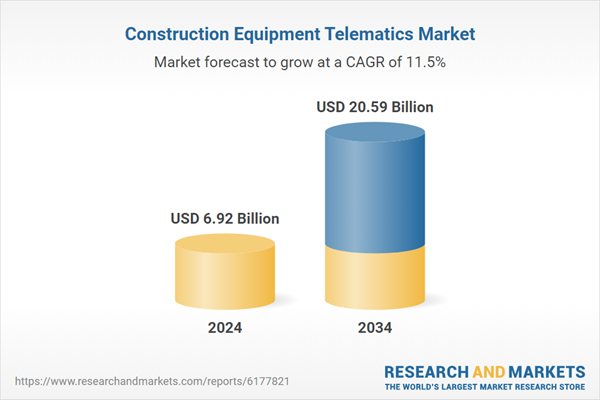The market is shifting from basic GPS and fleet tracking solutions to advanced software-enabled services that support predictive maintenance, fuel management, and operational optimization. Over-the-air (OTA) updates allow manufacturers and telematics providers to enhance system functionality without the need for hardware replacements, leading to savings of 15-20% on annual maintenance costs. As artificial intelligence (AI), the Internet of Things (IoT), and cloud-based platforms gain traction, data-driven decision-making is becoming central to the industry. Telematics systems use machine learning algorithms to process machine and operational data, helping construction companies reduce fuel consumption by 10-15% across various types of equipment. The COVID-19 pandemic caused significant disruption, particularly in the equipment rental sector, with European countries experiencing considerable declines. Additionally, as labor shortages continue to impact the construction industry, which affects 25% of firms, there is increased urgency to implement telematics-based automation and remote monitoring to improve productivity and efficiency.
The fleet segment held an 80% share in 2024 and is expected to grow at a CAGR of 11% from 2025 to 2034. Telematics systems, which utilize GPS and various sensors, provide real-time data on location, usage, fuel consumption, and operator behavior. This continuous stream of information allows fleet managers to optimize routes, minimize downtime, prevent theft, plan maintenance better, reduce fuel expenses, and improve operator safety. By using telematics, managers can efficiently monitor and manage fleets of all sizes, from large machinery to smaller vehicles, which leads to greater productivity and profitability.
The rental segment accounted for a 45% share in 2024. Rental companies were among the first to embrace telematics technology, recognizing its value in optimizing fleet management. These companies face unique challenges, such as managing equipment deployed across multiple job sites and locations, each with its own set of operational demands. Telematics allows them to remotely track assets, monitor usage patterns, and ensure efficient deployment.
U.S. Construction Equipment Telematics Market held 89% share and generated USD 2.15 billion in 2024. The widespread adoption of technologies such as IoT, 4G/5G networks, and cloud computing has increased the demand for telematics systems in the U.S. The country's construction industry benefits significantly from telematics by improving fleet management, operational efficiency, and reducing maintenance costs. Furthermore, with rising concerns over sustainability and compliance with environmental and safety regulations, construction firms are leveraging telematics to enhance their equipment's environmental performance.
Key companies in the Global Construction Equipment Telematics Market include Caterpillar, Fleet Complete, Geotab, HCSS, Komatsu (Komtrax), MiX Telematics, Omnitracs, Samsara, Teletrac Navman, Tenna, Topcon, Trackunit, Verizon Connect, and Volvo CE. These companies are enhancing their market positions by adopting various strategies such as forming strategic partnerships, investing in research and development (R&D) to innovate their telematics solutions, and expanding their product portfolios. By integrating advanced technologies like AI, cloud computing, and IoT, these companies aim to offer more comprehensive solutions for equipment tracking, predictive maintenance, and fuel optimization.
Comprehensive Market Analysis and Forecast
- Industry trends, key growth drivers, challenges, future opportunities, and regulatory landscape
- Competitive landscape with Porter’s Five Forces and PESTEL analysis
- Market size, segmentation, and regional forecasts
- In-depth company profiles, business strategies, financial insights, and SWOT analysis
This product will be delivered within 2-4 business days.
Table of Contents
Companies Mentioned
The companies profiled in this Construction Equipment Telematics market report include:- Caterpillar
- Geotab
- Hitachi
- John Deere
- Komatsu
- Samsara
- Sany
- Trimble
- Verizon Connect
- Volvo CE
- XCMG
- United Rentals
- Fleet Complete
- Galooli
- HCSS
- JCB LiveLink
- ORBCOMM
- Ruptela
- Teletrac Navman
- Topcon
- Zonar Systems
- CalAmp
- Clue Insights
- Datalink IoT
- MachineMax
- MiX Telematics
- Omnitracs
- SensLynx
- Tenna
- Trackunit
Table Information
| Report Attribute | Details |
|---|---|
| No. of Pages | 300 |
| Published | September 2025 |
| Forecast Period | 2024 - 2034 |
| Estimated Market Value ( USD | $ 6.92 Billion |
| Forecasted Market Value ( USD | $ 20.59 Billion |
| Compound Annual Growth Rate | 11.5% |
| Regions Covered | Global |
| No. of Companies Mentioned | 31 |








